University of Pennsylvania, School of Design
Masonry Tectonic, Fall 2017
Instructors
Franca Trubiano, Jonathan Dessi-Olive
Franca Trubiano, Jonathan Dessi-Olive
Collaborators
Bricklayers and Allied Craft Workers (BAC)
International Masonry Institute
Boston Valley Terracotta
Bricklayers and Allied Craft Workers (BAC)
International Masonry Institute
Boston Valley Terracotta
Students
Ahmad, Alina,
Badahdah, Musab
Baothman, Joud
He, Mingxin
Kim, Chae Young
Kim, Joung-Hwa
Li, Dongliang
Li, Yang
Li, Yisha
Najem, Jeffrey Luciano
Peng, Yunzhongda
Sun, Tianyi
Swysgood, Mary Stephens
Tu, Shangzi
Wang, Chwen-Ping
Wang, Siqi
Welch, Morgan Leigh
Xiong, Shuoqi
Zha, Yili
Zhou, Xieyang
Ahmad, Alina,
Badahdah, Musab
Baothman, Joud
He, Mingxin
Kim, Chae Young
Kim, Joung-Hwa
Li, Dongliang
Li, Yang
Li, Yisha
Najem, Jeffrey Luciano
Peng, Yunzhongda
Sun, Tianyi
Swysgood, Mary Stephens
Tu, Shangzi
Wang, Chwen-Ping
Wang, Siqi
Welch, Morgan Leigh
Xiong, Shuoqi
Zha, Yili
Zhou, Xieyang
“Beyond text, beyond image, there is a craft of making with masonry.” – Franca Trubiano
This seminar and workshop organized and led by Associate Professor Franca Trubiano introduced students to the subject of masonry tectonics by investigating new design opportunities made possible by clay brick and terracotta tile materials. Innovation was channeled via this most ancient of materials and the seminar was focused on the art and science and the construction and modeling of masonry structures.
In reviewing the history and theory of masonry construction, students acquired fundamental knowledge on the materiality of tiles, vaulting techniques, form finding, and its associated labor. The seminar was supported by expert consultants who, with first-hand knowledge of masonry techniques, led hands-on masonry workshops for students to engage the material reality of masonry. Students worked alongside Penn Design alumnus Jonathan Dessi Olive (MArch’15) and union-trained masonry apprentices from the Bricklayers and Allied Craft Workers (BAC) Local 1, in Northeast Philadelphia.
The seminar is grateful for the support of Roy Ingraffia from the International Masonry Institute, Boston Valley Terracotta, and BAC.
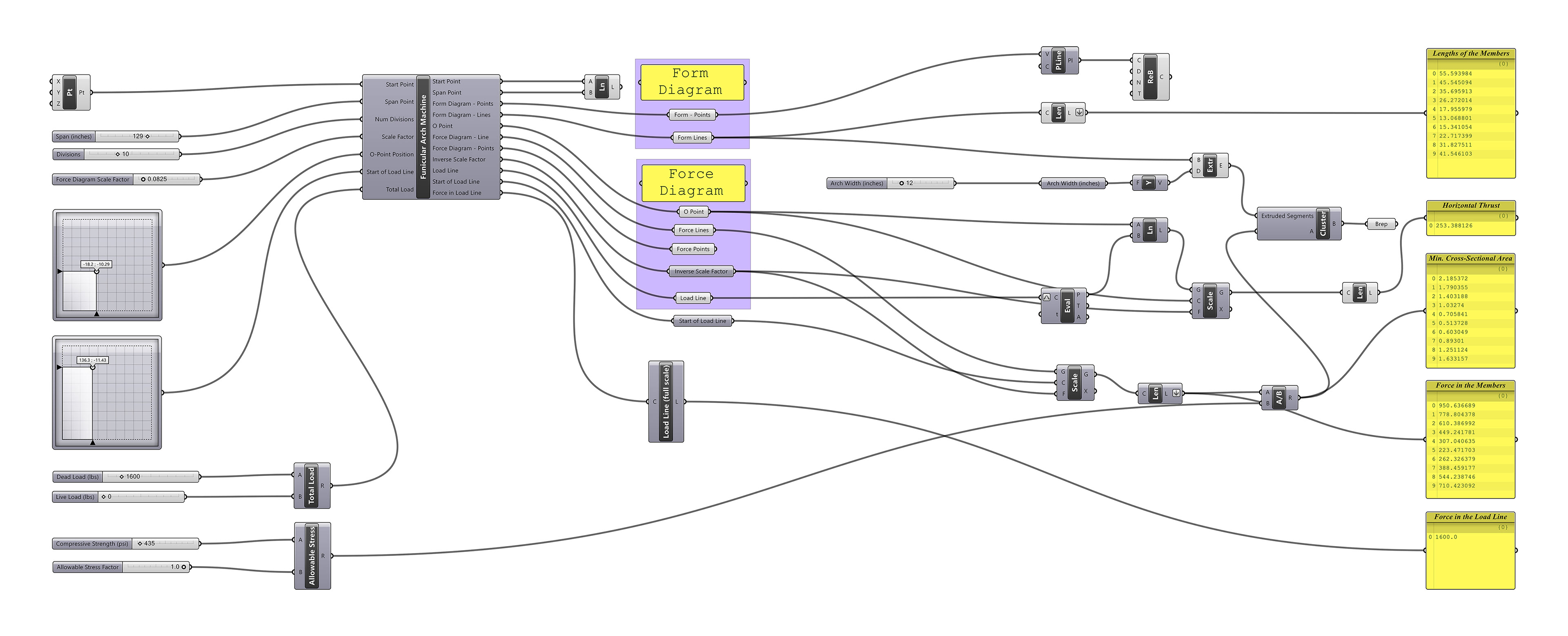
Funicular script in Grasshopper and Rhino for modeling and load testing
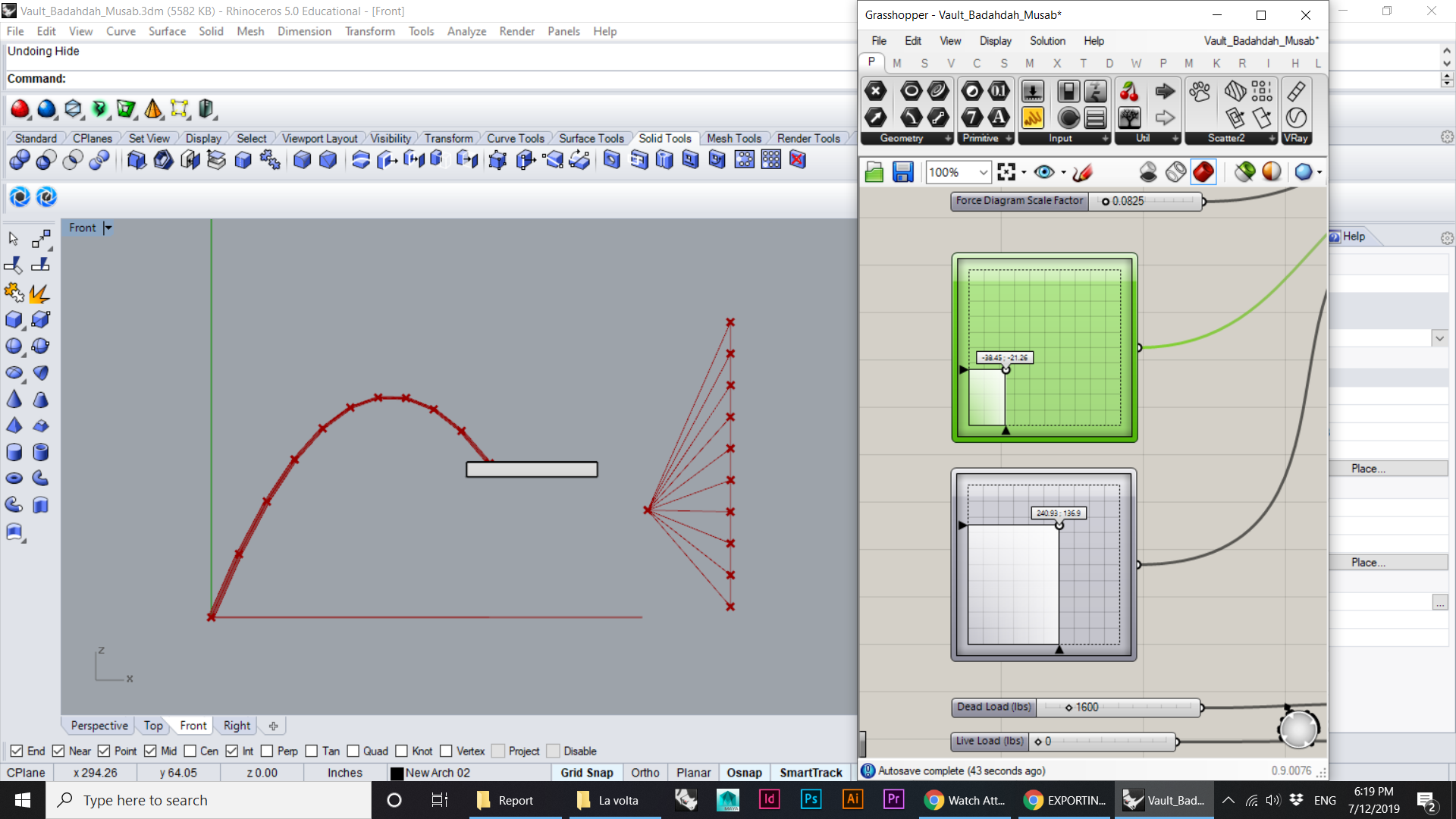
Test of force diagram and form diagram 01
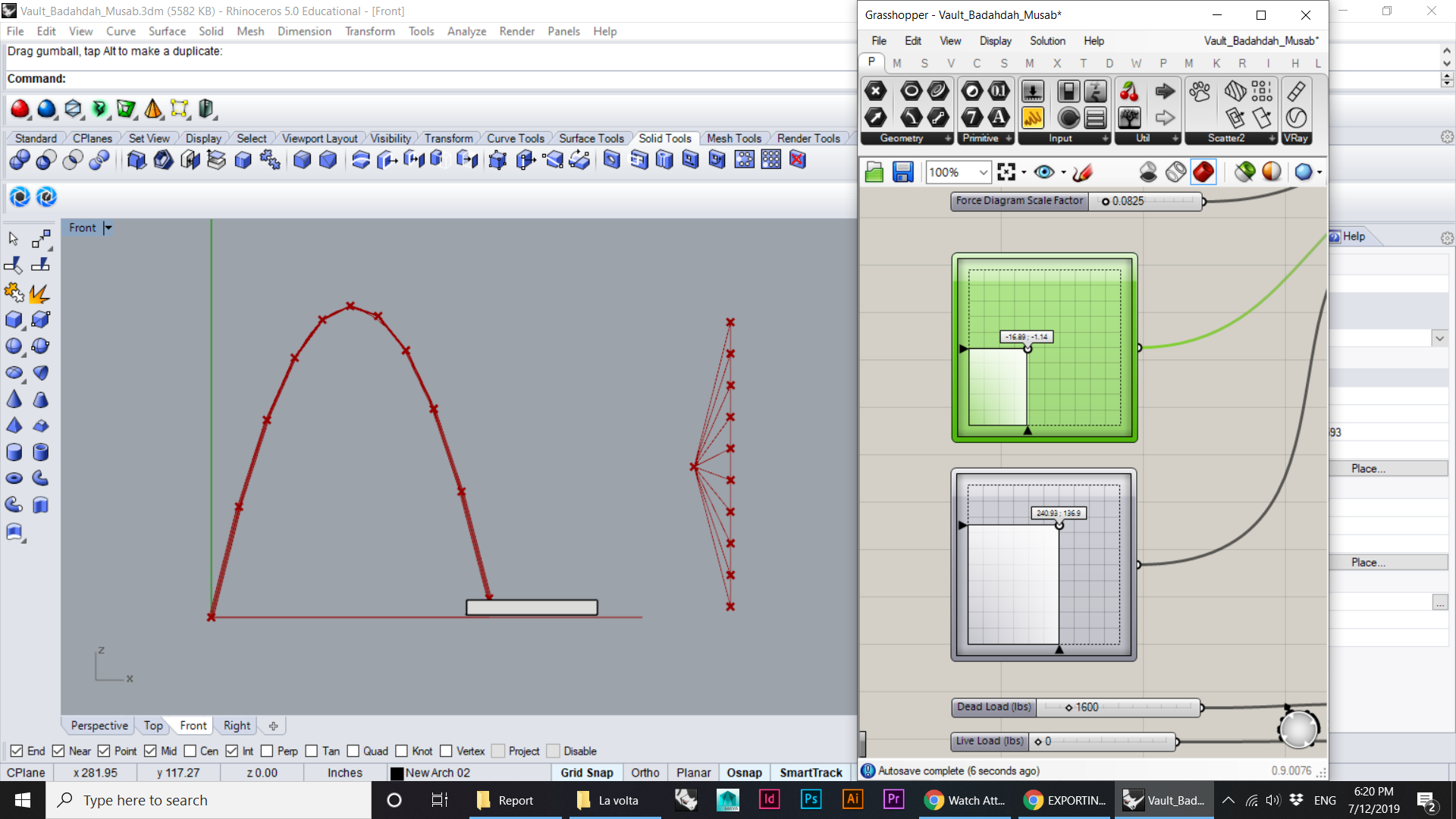
Test of force diagram and form diagram 02
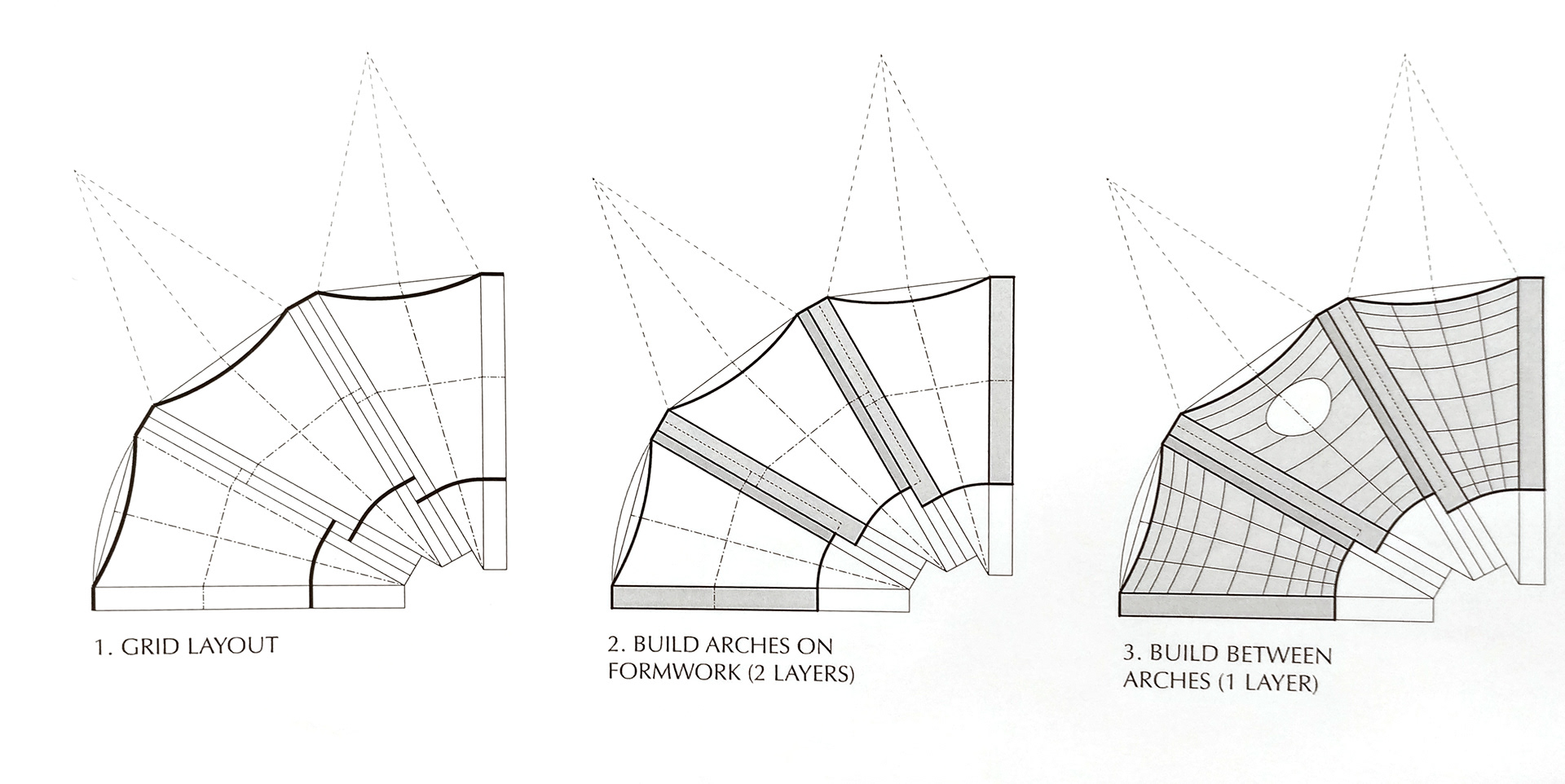
Vault Design. Three vaults connected on one side and splits on the other side. Each vault has a different height
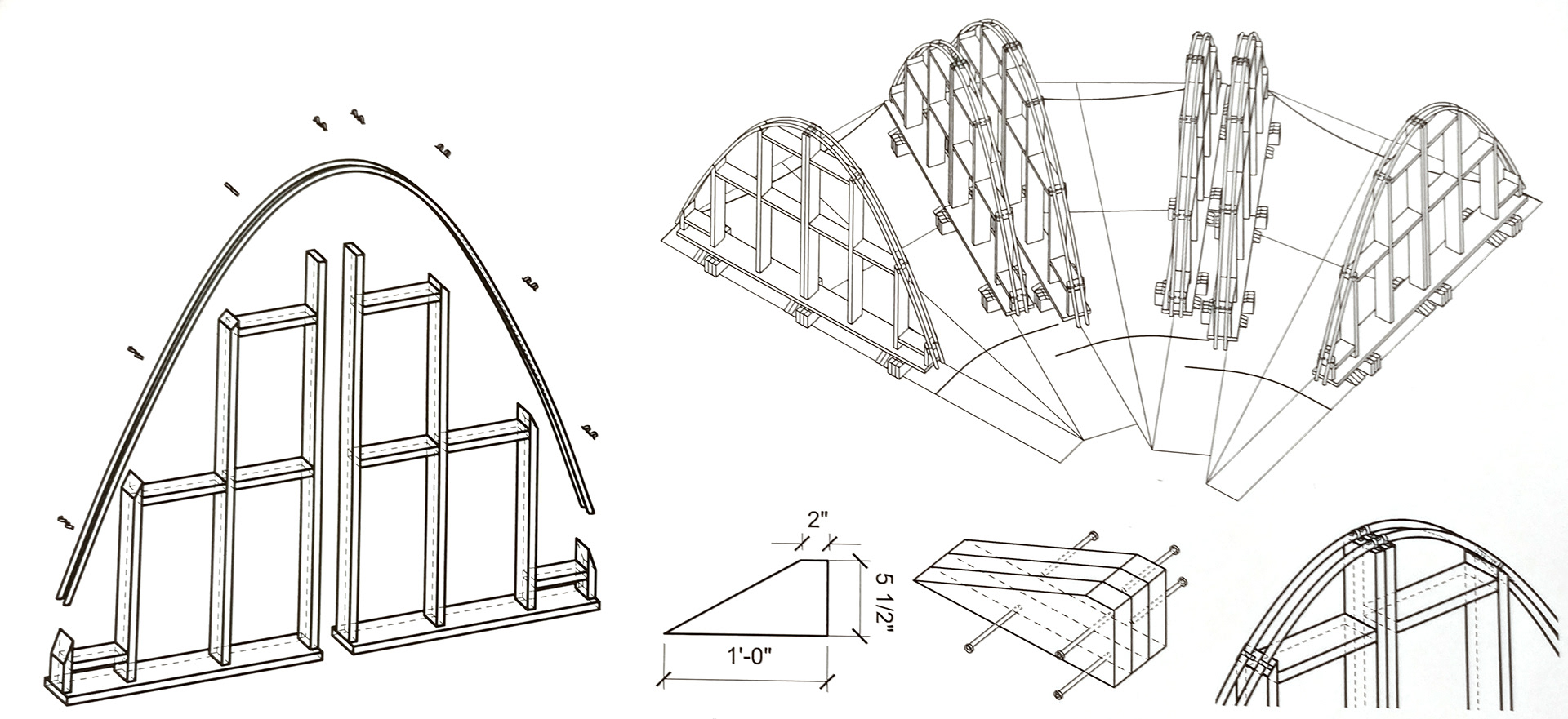
Formwork design for construction
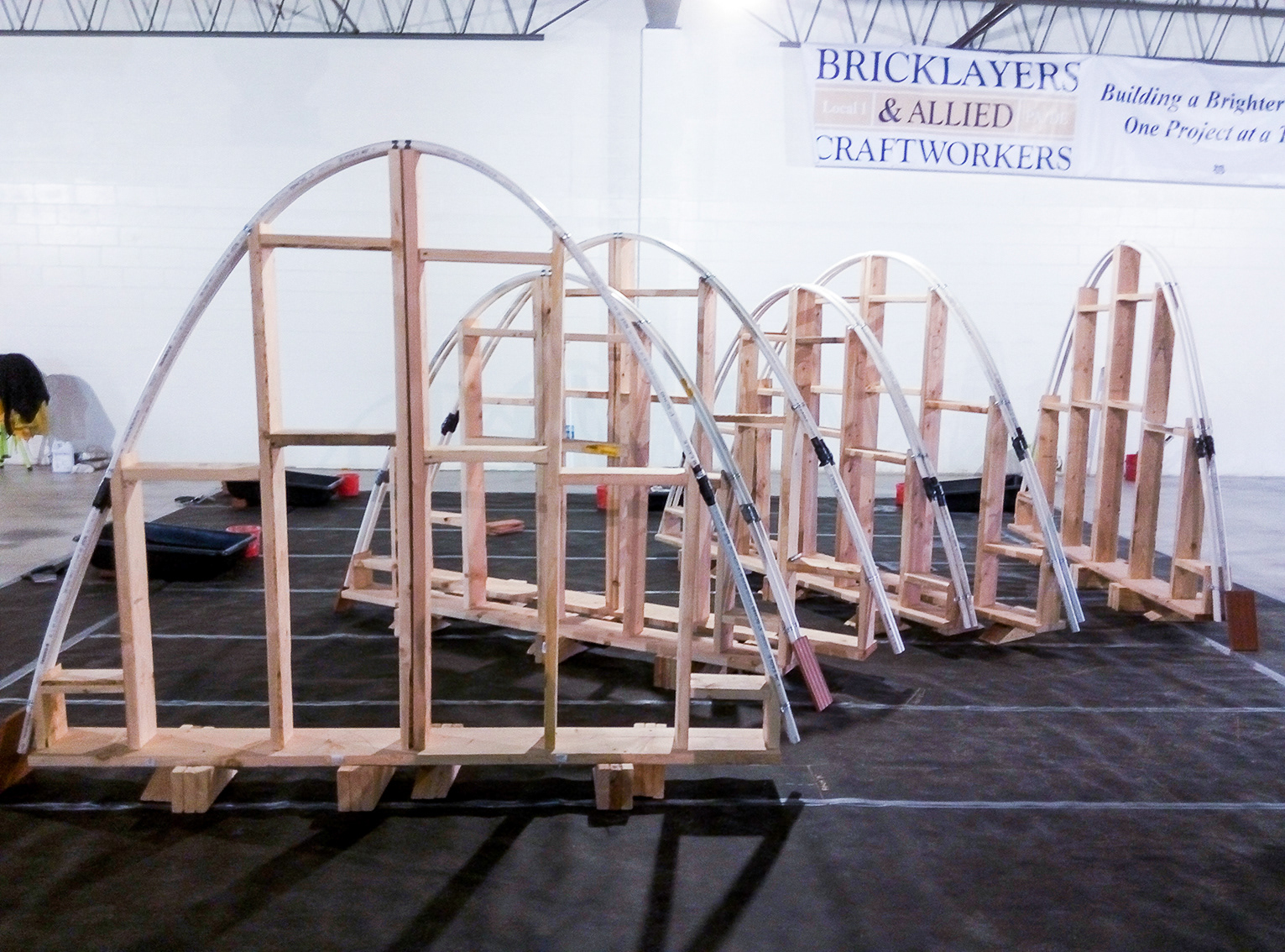
Formwork on site. Different heights already visible.

This technique rely on the force distribution overall geometry. Even thin triple layered terracotta would be strong enough so self-sustain structurally
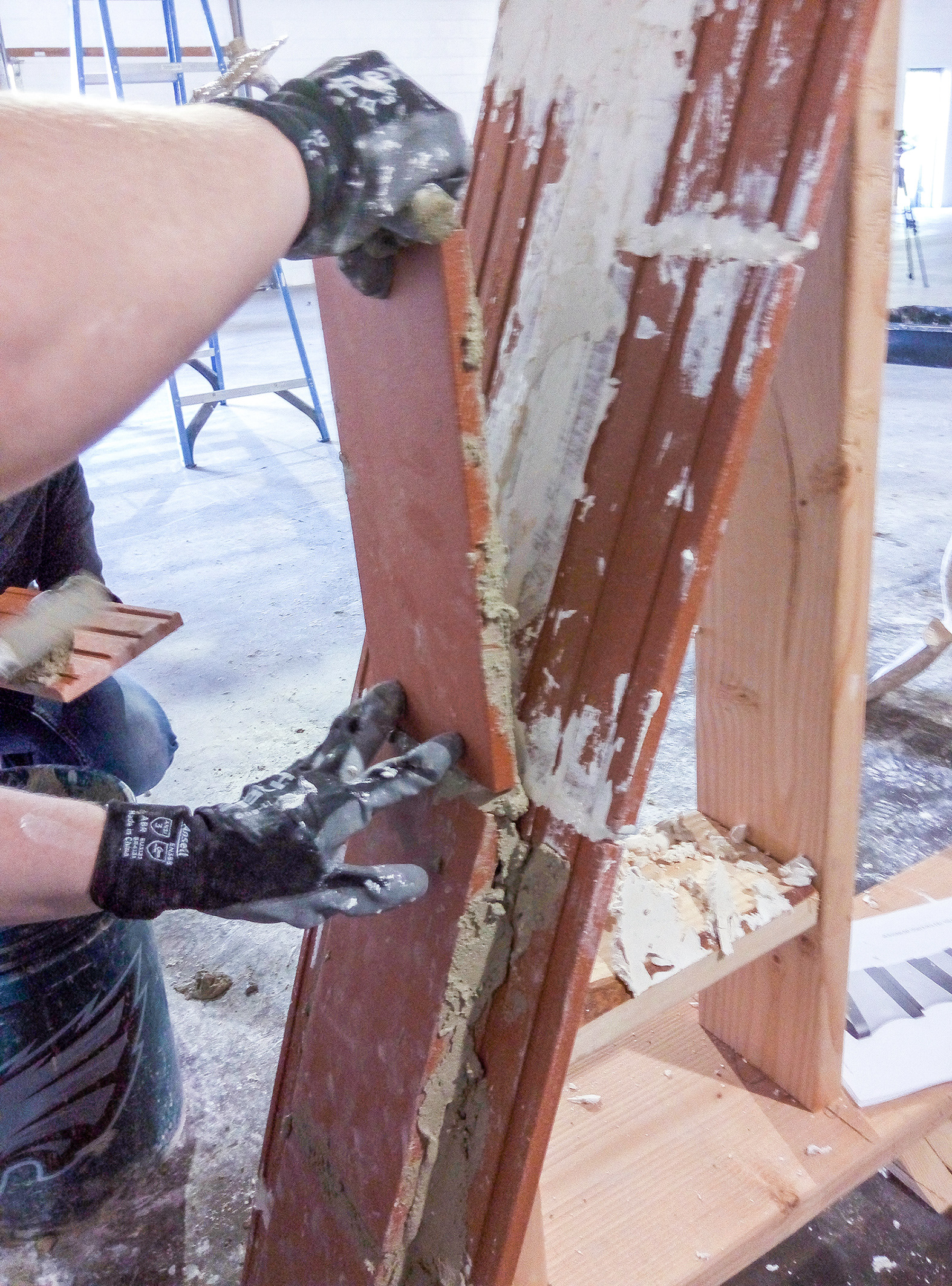
Building the arches first, followed by the skin in between.
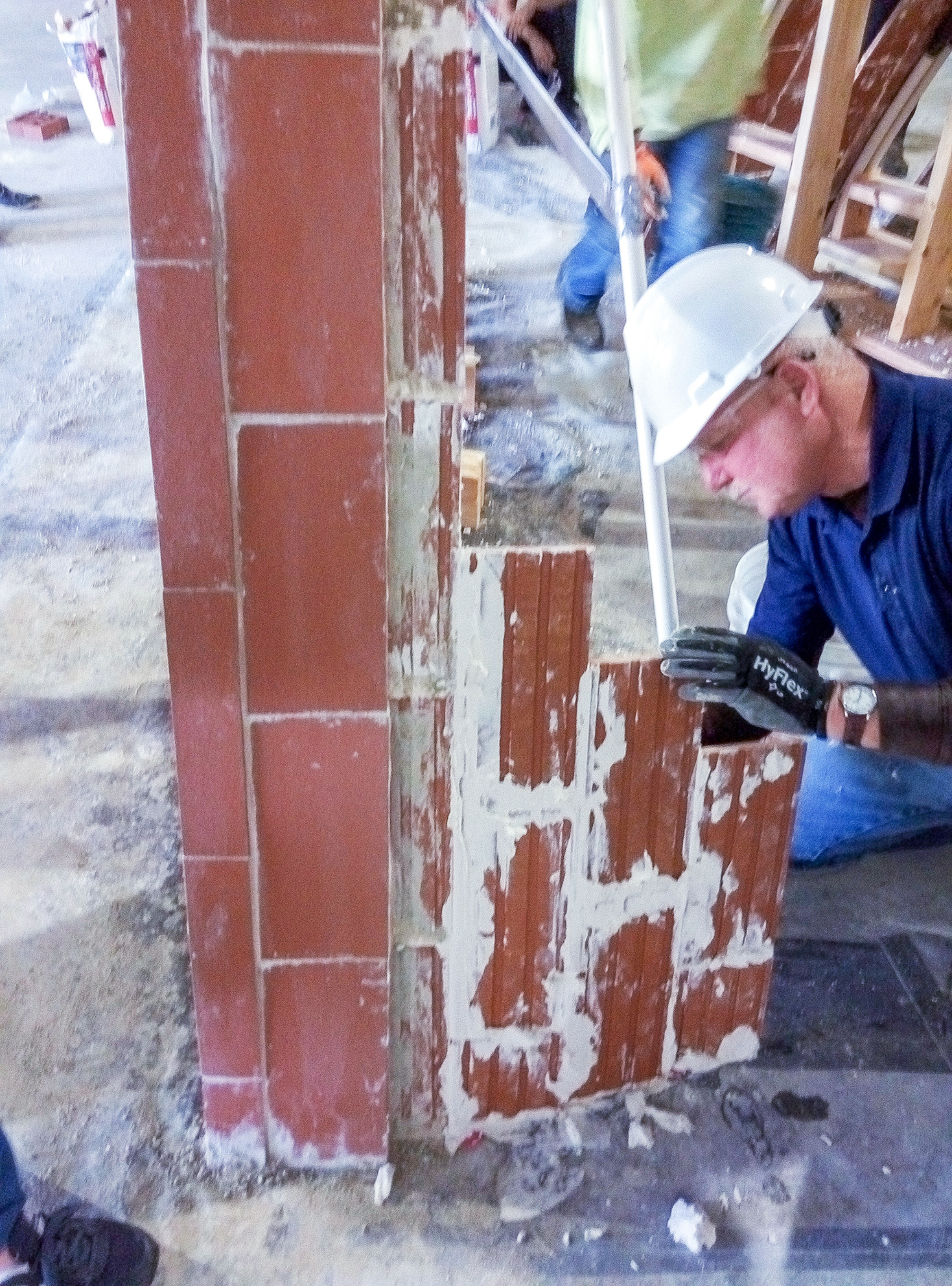
Widening the arch to increase strength as part of the Funicular tested design.
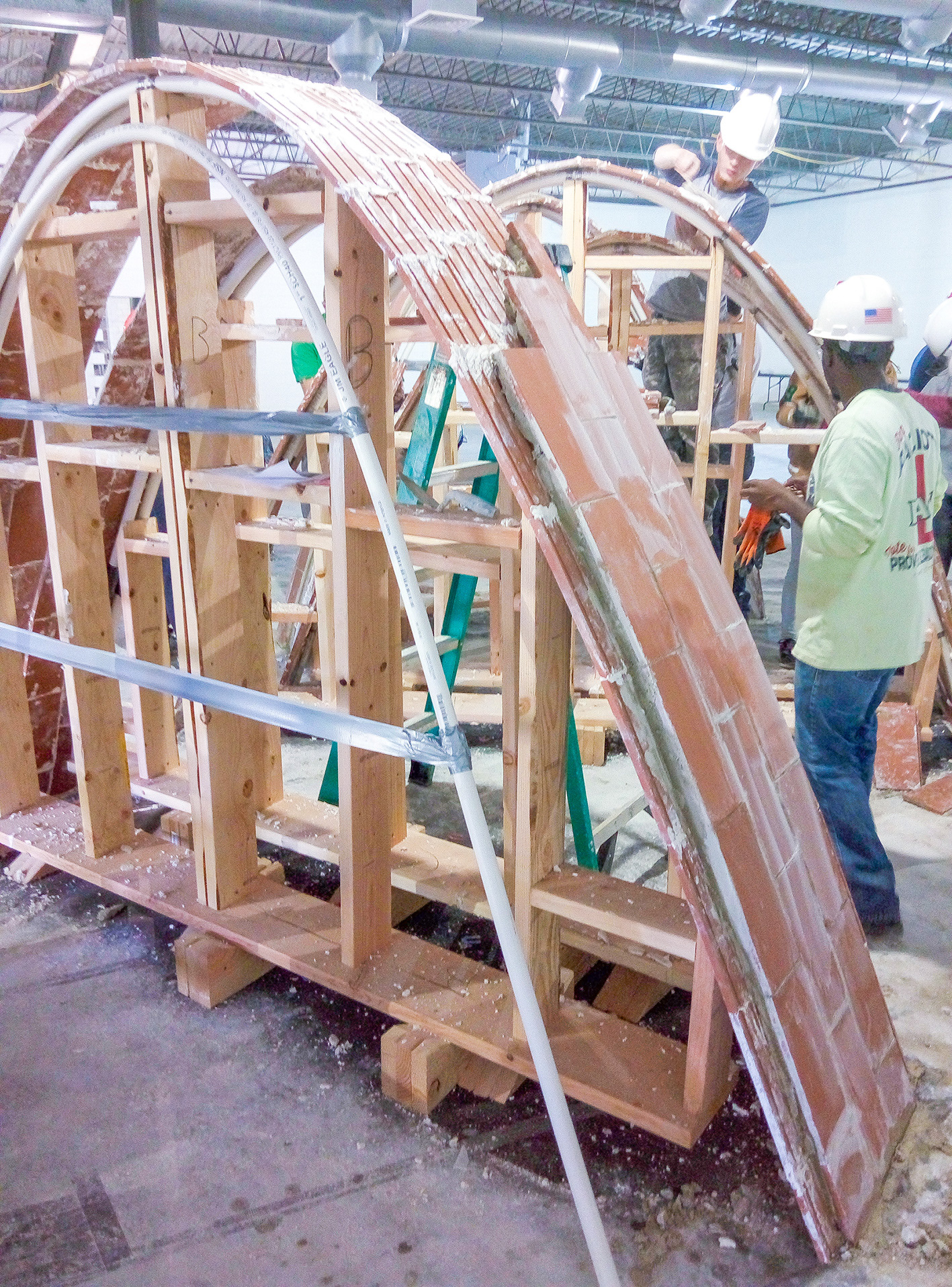
As the arches get layered, their strength increased. Thickness to strength ration was studied in Grasshopper.
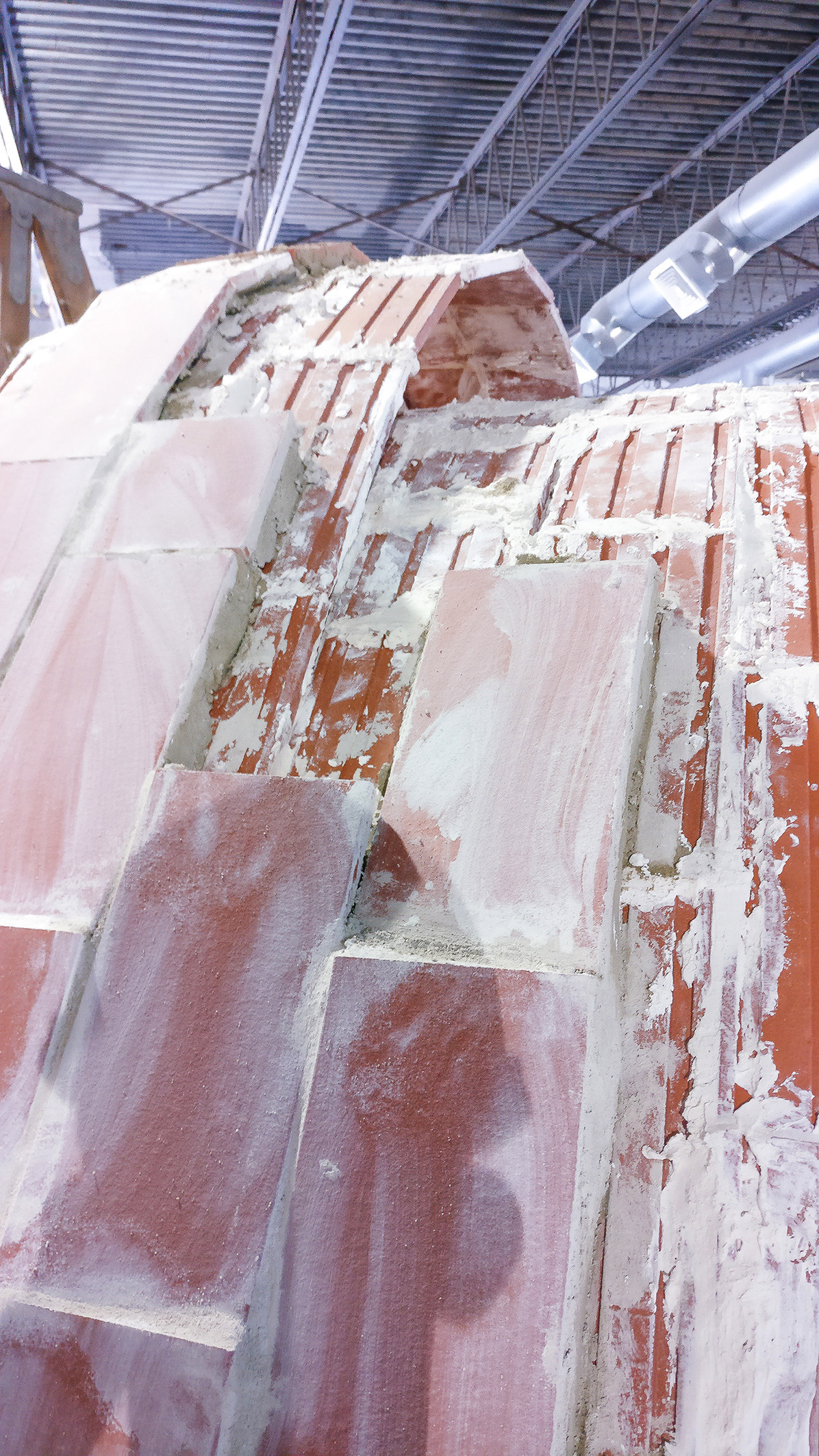
The vault split into three different heights where the arch split to create secondary arch that establish the following vault.
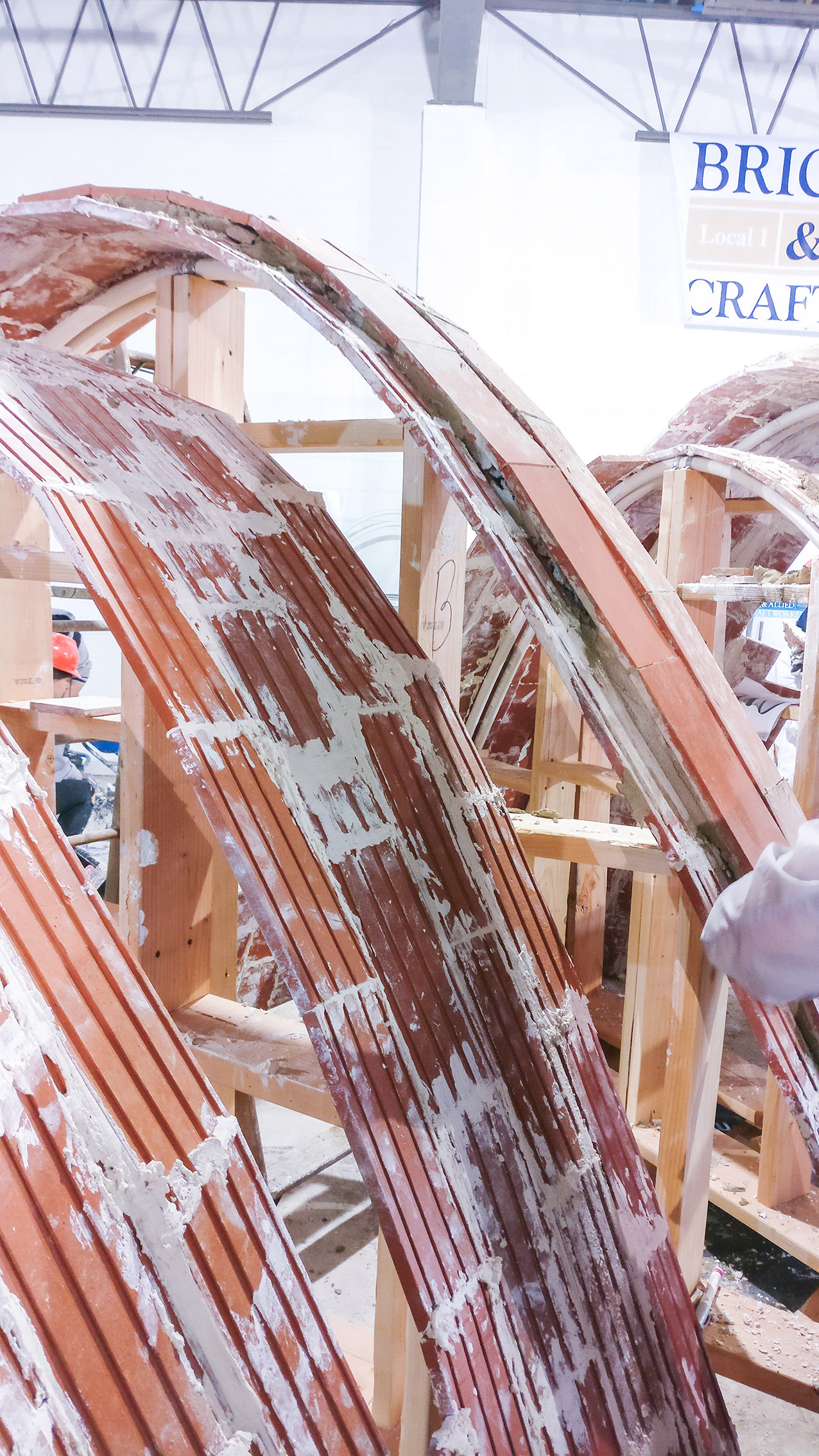
Splitting the arch into two is a crucial tectonic aspect of the design. It has a quality that brick usually doesn’t do.

Expanding the arches to build the skin in between. Professor Franca first hand working with the team

Structure is stable and the day is over. Just smiling for the memory.
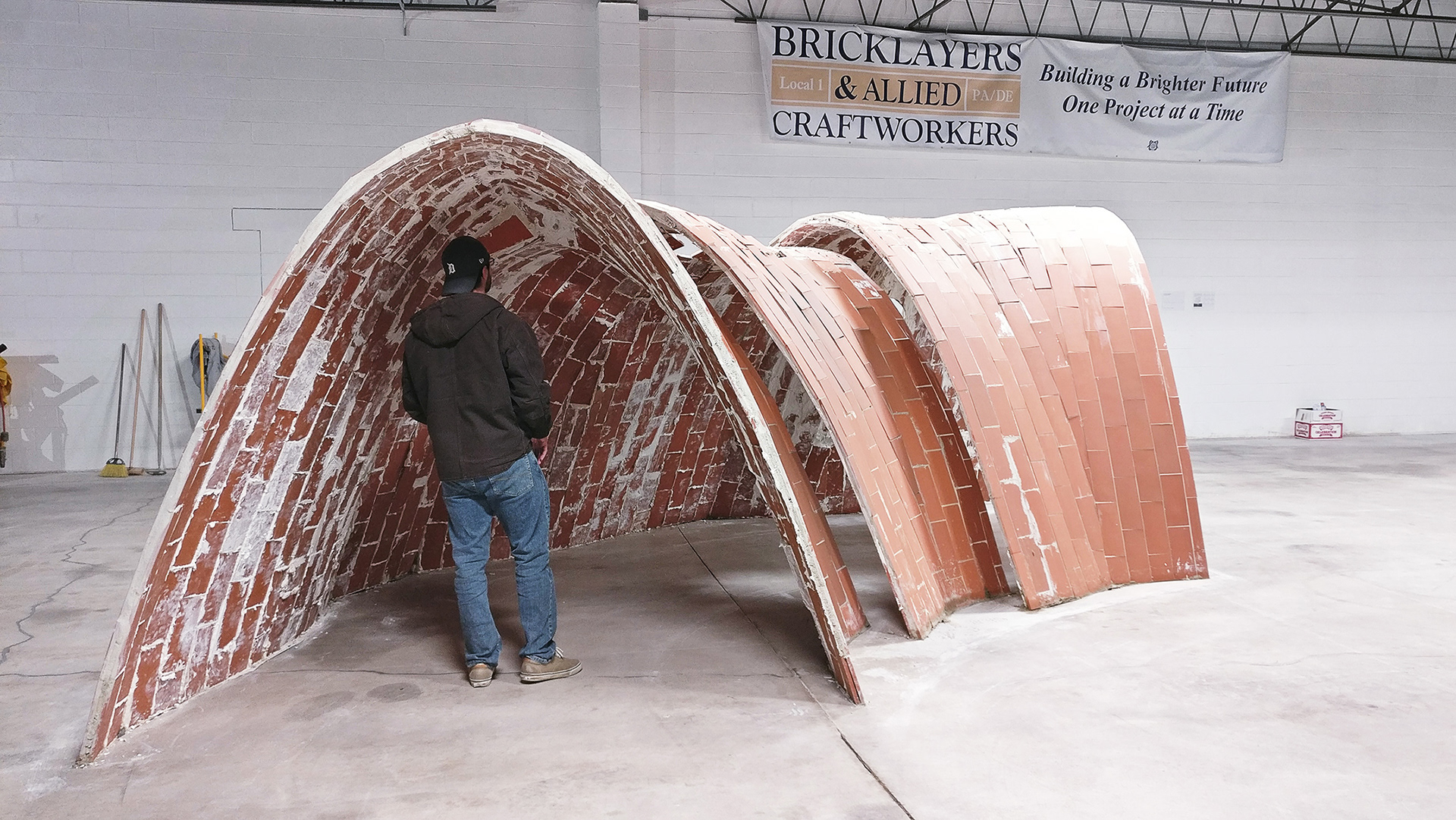
The finished vault is self standing without any tensile forces anywhere. Vault hierarchy is looking neat.
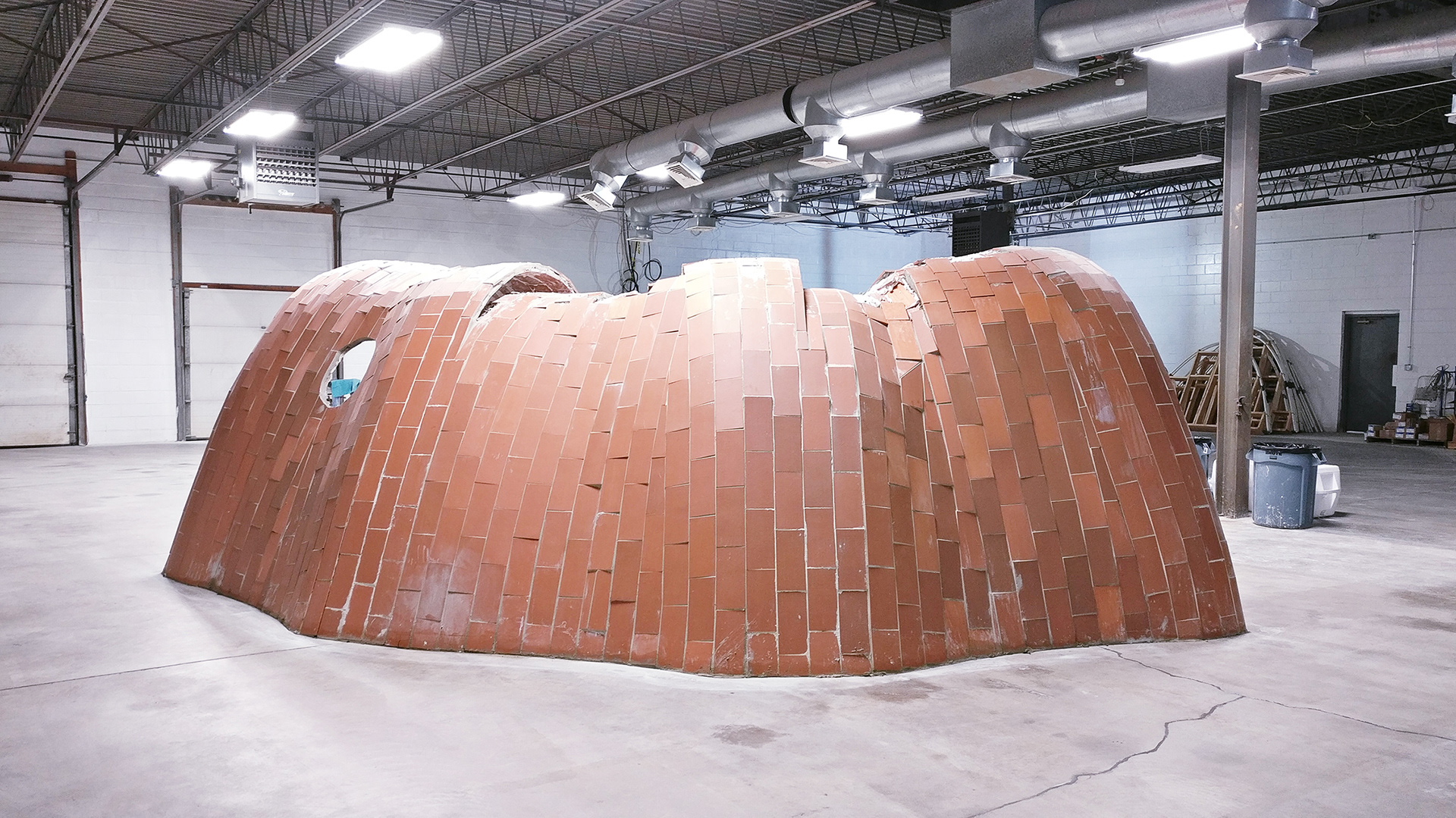
Lesson Learned: Translation of digital to reality is very crustal. If not thought and implemented thoroughly, the result might not be satisfying.
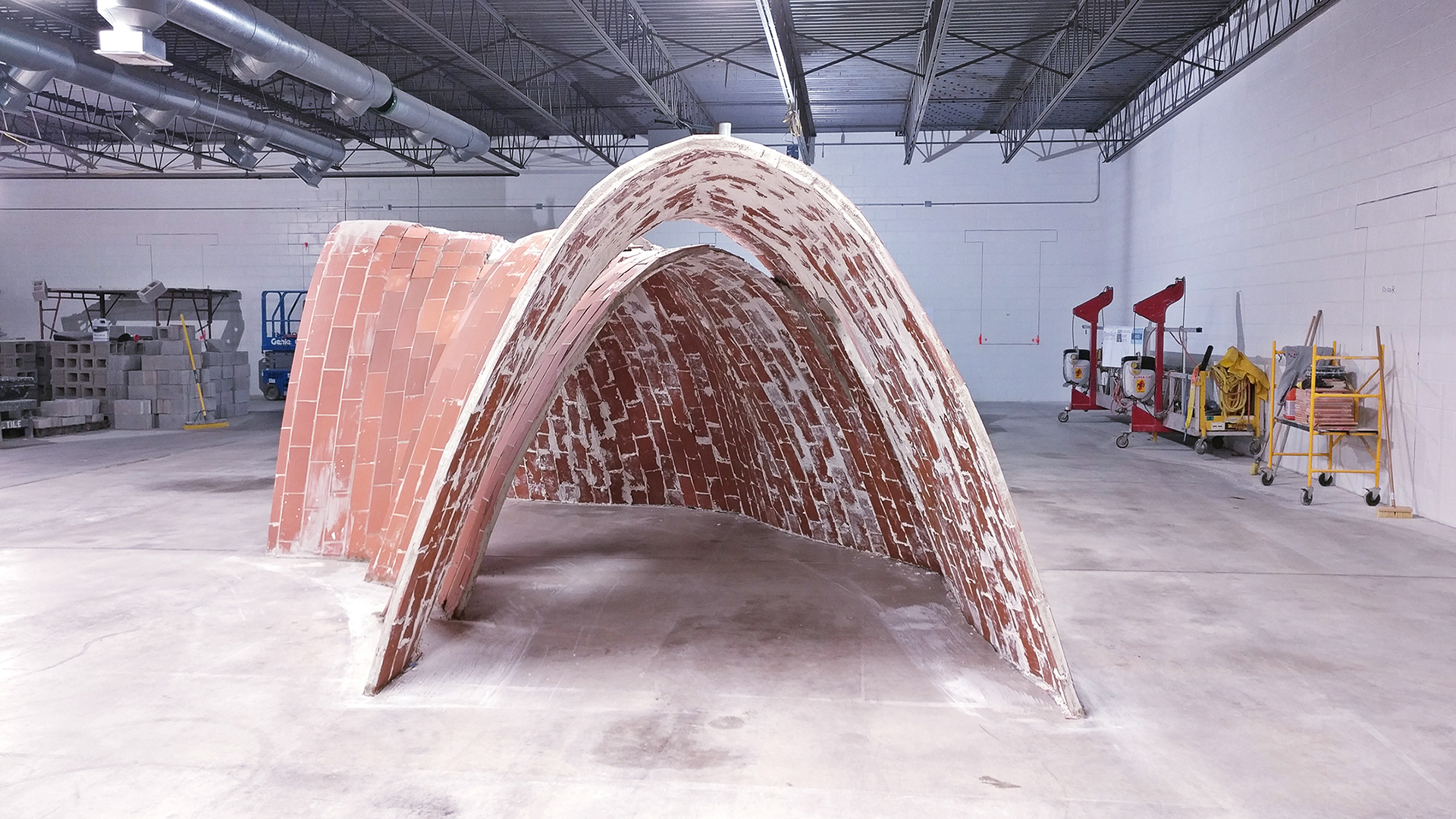
Lesson Learned: Always consider the time of post completion to clean and inspect.
